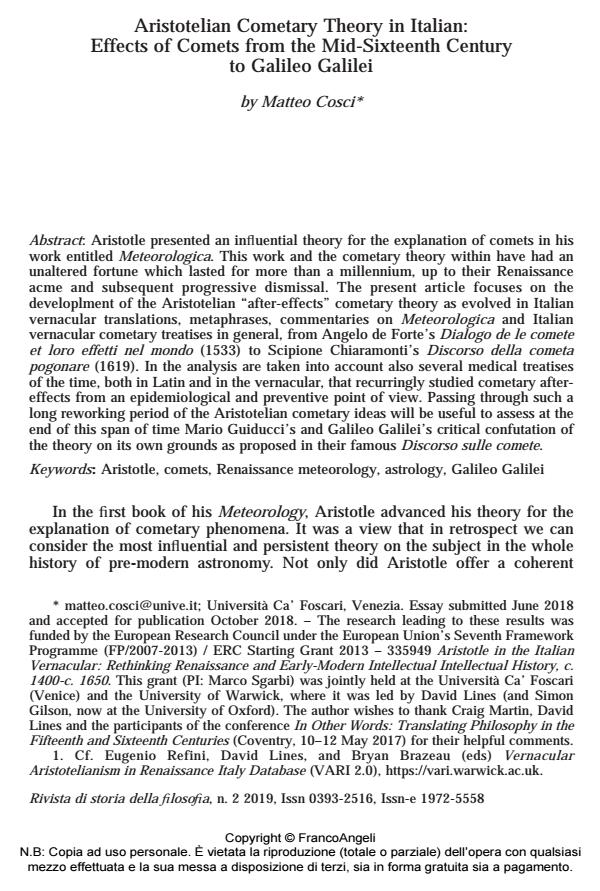Aristotelian Cometary Theory in Italian: Effects of Comets from the Mid-Sixteenth Century to Galileo Galilei
Journal title RIVISTA DI STORIA DELLA FILOSOFIA
Author/s Matteo Cosci
Publishing Year 2019 Issue 2019/2
Language English Pages 18 P. 343-360 File size 157 KB
DOI 10.3280/SF2019-002010
DOI is like a bar code for intellectual property: to have more infomation
click here
Below, you can see the article first page
If you want to buy this article in PDF format, you can do it, following the instructions to buy download credits

FrancoAngeli is member of Publishers International Linking Association, Inc (PILA), a not-for-profit association which run the CrossRef service enabling links to and from online scholarly content.
Aristotle presented an influential theory for the explanation of comets in his work entitled Meteorologica. This work and the cometary theory within have had an unaltered fortune which lasted for more than a millennium, up to their Renaissance acme and subsequent progressive dismissal. The present article focuses on the developlment of the Aristotelian "after-effects" cometary theory as evolved in Italian vernacular translations, metaphrases, commentaries on Meteorologica and Italian vernacular cometary treatises in general, from Angelo de Forte’s Dialogo de le comete et loro effetti nel mondo (1533) to Scipione Chiaramonti’s Discorso della cometa pogonare (1619). In the analysis are taken into account also several medical treatises of the time, both in Latin and in the vernacular, that recurringly studied cometary aftereffects from an epidemiological and preventive point of view. Passing through such a long reworking period of the Aristotelian cometary ideas will be useful to assess at the end of this span of time Mario Guiducci’s and Galileo Galilei’s critical confutation of the theory on its own grounds as proposed in their famous Discorso sulle comete.
Keywords: Aristotle, comets, Renaissance meteorology, astrology, Galileo Galilei
Matteo Cosci, Aristotelian Cometary Theory in Italian: Effects of Comets from the Mid-Sixteenth Century to Galileo Galilei in "RIVISTA DI STORIA DELLA FILOSOFIA" 2/2019, pp 343-360, DOI: 10.3280/SF2019-002010